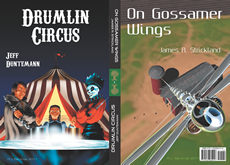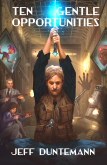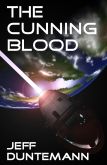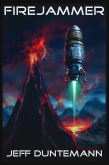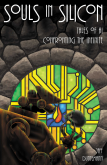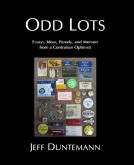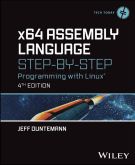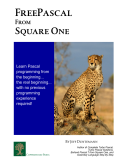- Ubuntu 11.04 Natty Narwhal is out, and hardly anybody’s even mentioned it. Could it be that nobody’s really upgrading every six months anymore? (My workaday Linux system is still running 10.04.) I’m not bullish on Unity, and may reconsider Kubuntu when I set up a GX620-based Linux box in coming weeks.
- The formidable Al Williams has a three-part series on DDJ explaining how to use the visual tool App Inventor to create Android apps. I have not used App Inventor yet, but Al’s analysis of the challenges of using it (and of visual metaphors for programming generally) are worth reading. Part 1. Part 2. Part 3.
- John Scalzi has written a brand new Fuzzies novel. (Not furries, Fuzzies–tiny aliens created by H. Beam Piper.) Scalzi’s good–this one could be fun. I’ve read all the Fuzzies books (by Piper and others) and truly only like Little Fuzzy (the original) and Fuzzy Bones by William Tuning. Fuzzy Sapiens is so-so, and Fuzzies and Other People is so awful that Piper chose not to submit it for publication after he wrote it in 1962. It was found in a box after he committed suicide in 1964, and not published until the late 1980s.
- Interestingly, most of Piper’s copyrights were not renewed, and a great deal of his work (including Little Fuzzy) is now in the public domain. Go to the “P” author page on Project Gutenberg and scroll down.
- I heard years ago that armadillos are the only other mammalian species that contracts leprosy, but now there’s evidence that virtually all human cases of the disease (which is vanishingly rare these days) were contracted from them. (Thanks to Pete Albrecht for the link.)
- Illinois is banning trans fats in its schools (with a notable exception for doughnuts, how healthy!) but does anyone dare remind them that there is absolutely no trans fat in unhydrogenated lard? In terms of monounsaturated fat (the good fat) lard comes out better than butter, and both are far better than the vegetable oil spreads we call margarine. Funny how the more animal fat I eat, the more animal fat (my own!) that I lose. (Thanks to Pete Albrecht for the Illinois link.)
- And the much-reviled Dr. Eades makes the point that Mediterranean people who supposedly take all their foods as olive oil are actually doing a lot of their cooking in animal fats, especially lard. (They export the olive oil to people like us, who think it’s healthier.)
- This gets an award for something. I’m still not sure what.
April, 2011:
Odd Lots
Ebooks and Adding Value to the Public Domain
I just got our first two Copperwood Press ebooks posted to the Kindle store, and they’re now available for sale: Drumlin Circus / On Gossamer Wings and “Whale Meat.” No DRM. I’m still working with Ingram’s Lightning Source to get the double mounted and sellable in its print edition. It won’t be available from Lulu, and over time I will be migrating my other print books from Lulu to Lightning. Learning their relatively unforgiving system the first time involves a little hair-tearing, but once learned it’s learned.
There’s certainly plenty to do in coming months to get the rest of my material converted to good ebooks and posted on the major retailers. One issue I’ve found troubling for some months now is the ambiguity regarding public domain material. Both B&N and Amazon make a big deal about whether a work is in the public domain. PD titles get lower royalty rates and just generally seem libri non grati on the retailer sites. This isn’t surprising in some ways. The retailers are trying to avoid having 2,774 versions of The War of the Worlds on their servers, taking up space and confusing the readership. The definition of “public domain” varies legally by country, and what may be free in Australia or Chile is not necessary free here. So they do have to be careful on the rights front.
The issue matters to me because of The Old Catholic Studies Series, a project that I’ve been tinkering for ten years now. The goal was to scan, OCR, edit, and lay out clean, indexed versions of the foundational texts of Old Catholicism so that people wouldn’t have to pay $200 to read yellowed, crumbly, scribbled-in books printed in 1874. I have two such texts currently available in print editions: The New Reformation and The Pope and the Council. They were a lot of work, but they’ve sold reasonably well, and I consider the effort worthwhile. (It was also damned good practice in making books.) Not a lot of people want them, but the people who do want them have been very happy with them. I would have done another two or three, but John Mabry’s Apocryphile Press got there ahead of me, and put out facsimile print editions of the other major works I had considered. I prefer new layouts to facsimile editions, but Apocryphile’s scans are fairly clean and I do recommend them.
It’s true that the source materials are long in the public domain (which at least in the US includes all books published before 1923) but technically, what I’m offering are derivative works. I scanned them, page by page, OCRed them to extract the text, and then went over the text character by character to eliminate OCR errors. (Some were a hoot: “The Frankish King Pepin…” became “The Prankish King Pepin…”) The books were not indexed, and I indexed them. I fixed a few typos (especially in The Pope and the Council, which was a hurried English translation of a work written originally in German) and Americanized the British spelling. Although I don’t claim to have done a copy edit on either book, I fixed a number of examples of what I consider regrettable diction. I wrote an introduction explaining what I did and how. I gave them nice covers. If I had another hundred years to live and no need to make a living, I would do a strong edit on both.
By any legal definition what I’ve produced are derivative works that are not themselves in the public domain. That said, anybody who took an OCR of The War of the Worlds and changed three words could make the same claim, and if enough people do that, the noise level at ebook retailer sites would go through the roof. Nobody’s PD ebooks would sell well enough for it to make anything like a reasonable new edition of any PD book worthwhile.
I don’t know precisely what the answer is. Vetting tens of thousands of $2.99 ebooks is a labor-intensive business, and what sorts of standards would apply? Refusing facsimile editions is obvious and easy, but I doubt anyone would even try to read 50MB page-image PDF facsimiles on a Kindle. (On the Nook Color it might be practical; grab something 1875-ish from Google Books and let me know!) A better suggestion might be to require an up-front payment from publishers for posting anything either fully in the public domain or significantly derived from the public domain. That would cut down on bothouse publications and allow people like me to genuinely add value to public domain material without drowning in unmodifed or barely modified PD books. I’d think $25 would be about right. My books would earn that back in a month or six weeks, and the bothouses couldn’t justify it.
It’s not often that I’d willingly ask to have my own costs raised, but publishing has always been a weird business, and sometimes, well, free is less than worthless.
How Music Really Oughta Work
I just got back from Big Family Easter In Chicago, where it rained eight out of the ten days we were there. So I’m drying out, catching my breath, tinkering with the outline of Ten Gentle Opportunities, and trying to iron out a long list of wrinkles in several ebook projects. I’m crosseyed from poking at details, so I’ll take ten minutes out for a slightly tangled story. This may start to sound like an episode of James Burke’s Connections after awhile, but bear with me.
Marci Braun (scroll down a little) is a popular country/western DJ on Chicago’s big country station US99.5. She’s also Carol’s sister’s husband’s cousin’s daughter, and we’ve seen her here and there at family gatherings on Carol’s side since she was a pre-teen. The first time we took Dash to Chicago (he was nine weeks old at the time) he was a big hit at our nephew Matt’s college graduation party, and he bonded with Marci in a country hemidemisemiquaver. So I listen to her when I know she’ll be on the air, and she has a lot to do with my growing affection for country music. Oh, and the fact that pop music is now completely incoherent, lacking warmth, melody, harmony, and just about everything else that I value. Several of my friends among the Educated Elite grumble at me for listening to country music (“It’s so, so, well, Republican!“) but I just tell them that if they can bring back close harmony and clever lyrics to pop music, I’ll jump. In the meantime, I listen to country and classical. Draw whatever conclusions you wish. (No points for the obvious one that I take great pleasure in annoying the Educated Elite.)
Anyway. A week ago Monday night, while I was driving from our condo in Des Plaines to Crystal Lake after not seeing Carol for three days, I punched the 99.5 button on the car radio, and Marci was there. (Actually, odds are that she was a digital audio file at that moment, but that’s just how the radio business works.) She ran a commercial, and then introduced a song: Darius Rucker’s “This.” Great raving upbeat piece, celebrating a life that turned out very well somehow, in spite of all the mistakes we make and the bad luck that comes as a side dish to life’s main course, generally right there beside the lima beans.
Brilliant lyric, which you can read here. The gist:
I don’t really know how I got here
But I’m sure glad that I did;
And it’s crazy to think that one little thing
Could’ve changed all of it.Maybe it didn’t turn out like I planned–
Maybe that’s why I’m such, such a lucky man!For every stoplight I didn’t make;
Every chance I did or I didn’t take;
All the nights I went too far;
All the girls that broke my heart;
All the doors that I had to close;
All the things I knew but I didn’t know
Thank God for all I missed
Cause it led me here to
This.
If you like feel-good music, go buy that song, which will cost you the same as a small Diet Coke at McDonalds, and will stay with you a lot longer. Just as the song began I was coming out of the Union Pacific underpass on Northwest Highway just west of Des Plaines, and there was a freight train heading by overhead. At the song’s inspiration, I was reflecting on how much I like my life. I’ve gotten almost everything I’ve ever wanted, granting that some of it took awhile. I found my soulmate at 17, and my life’s work at 33. That may have been optimal: Had I not met Carol that early I would probably have lost her to someone else, because at 16 she didn’t know yet how hot she really was. (And anyone who knew me when I was 17 will recall how hot I wasn’t.) If I hadn’t worked at technical pursuits before I discovered that I was an editor and a tech writer, well, I might have tried to make a living on SF (ha!) or given up on writing entirely. Everything just seemed to flow, one small success from another, with equal parts luck and hard work to drive the machinery. I had it: Dogs, houses, sunsets, tube sockets, saints up and down the family tree, everything. (I even had a pickup truck once.)
Luck. Trains. Whew. In 1977 I was driving home from my mom’s house along Devon avenue, and I raced a train to a crossing. I made it by two car lengths. Why? I don’t know. It was by several orders of magnitude the stupidest thing I’ve ever done, and if my dad’s anemic, beat-to-hell ’74 AMC wagon had been just a little bit out of tune, I would have died in 1977. I had been married to Carol for less than a year, and had not yet completed wire-wrapping my first computer. I was just getting out of first gear. Damn, I’d barely gotten out of park.
Stupidity comes in smaller containers as well. I told my broker to buy $5,000 worth of Microsoft stock a month after they went public in 1986. She offered me a limited partnership instead, and I took it rather than chewing her ass to go back and do what I told her. But compared to being splatted by a General Electric U23B, hey, small potatoes.
Like I said, great song. I got home to Colorado, fired up Firefox, found the song among Amazon’s DRM-free 99c MP3s, and ninety seconds later it was playing. It’s not tied to a particular player or DRM technology, so there’s no reason to think I won’t be playing it twenty years from now. Certainly we’ll play it at our 40th wedding anniverary party in 2016, where I will wear my expensive cowboy hat and dare y’all to dance.
That’s how music ought to work: You hear a song somewhere that you’d like to hear again, so you find it online, pay for it quickly and easily, download it, and keep it forever. I remember 45s and LP vinyl. (Hell, I remember 78s.) I remember 8″ reel-to-reel. I remember 8-tracks and cassettes and CDs. I remember my Diamond Rio. I still have an iPod. Maybe we had to pass through all that to get where we are today, and maybe it might have turned out differently had some engineer been brighter or Sony not as dumb as they always turn out to be. Doesn’t matter. The message hasn’t gotten out to every last corner of the world, but as long as Amazon’s system or something like it exists, music is where it needs to be.
Play it again. Play it forever. We’ve arrived.
Odd Lots
- Good Friday — bad weather, at least where I am. When I was in second grade, Good Friday included a whomping thunderstorm that rolled over the Northwest Side about 3PM. It got very dark and scary looking, and (after several days of intensive Holy Week preparation in school, especially about Christ’s death on the cross) it was natural for me to think that Good Friday was always dark and stormy, a reflection of what happened in our Bible stories. Alas, the next year Good Friday happened on a beautiful warm spring day. Lesson: Characterization matters more than setting. Don’t get distracted by the special effects.
- Besides, Friday is, well, Friday. How bad could it get? (Jesus could have died on a Monday.)
- Finally, if you haven’t seen this, do take a look. (2.4 MB PDF but well worth it.) You may miss some of the humor if you don’t know theology-geek things like who Bart Ehrman is, but overall it’s hilarious, and in a weird way rather touching. “Roman Soldier is considering early retirement.” I’ll bet.
- Carl Elkin has given the Jewish Haggadah the Facebook treatment as well. I’m sure I miss most of the humor by simply not being Jewish, but I do like God’s comments.
- This is an old article (2003) but allowing a little for inflation it looks to me like an accurate systematic treatment of the costs inherent in mass-market print book publishing. The takeaway is that print publishers were suffering even eight years ago (they’ve been suffering since midlate 2000, in fact) and that it’s miserable trying to turn a profit on an $8 mass-market paperback.
- The author of the above piece doesn’t talk much about per-book author earnings, but some quick envelope math indicates that (with some variance by contract terms) MM paperback authors get about 35c – 40c per book sold. (Note that I have never sold a MM paperback myself, nor did my company publish them.) This may explain why indie authors are willing to sell ebook novels for 99c: Authors get about the same amount per sale on a dollar ebook as they do on an $8 print book.
- Here is a slightly scary but as best I can tell accurate description of the problems confronting print publishers. From the same author come unsettling hints that traditional publishers are botching the ebook business, and botching it badly. Misfeasance or malfeasance? What’s going on here is unclear, but the situation bears watching. (Thanks to Amy Ranger for putting me on to it.)
- Pointers to this article by Gary Taubes have been coming in from all sides, but Dave Lloyd was the first to send it to me. The question of whether or not sugar should be called “toxic” is far less important than the question of whether sugar makes you fat–and whether some types of sugar (i.e., that ol’ devil fructose) make you fatter faster than others. Sure looks like it from here.
- I don’t know how well this works, but it’s a brilliant concept: Put a pico projector in an unused laptop optical drive bay. Not cheap. Not now, at least.
- How well things work? Wow: I haven’t seen a hardware review this negative in a long, long time. A tablet that won’t do anything useful unless it’s tethered to your Blackberry? WTF?
- Hey guys! Long integers!
Daywander
It’s half-past April. Do you know where your seasons are?
One of ours is missing. My nephew Brian and I woke up this morning to find a blanket of snow on Alles Street, and while Carol out in Crystal Lake reported less, it seems like everybody in greater Chicago got whitened sometime during the night.
So it was a good day to stay inside and continue my ongoing struggle with malformed epubs. I created a number of them a few years back when the epub format was new and the tools barely past primordial, and I’ve been meaning to fix their innards for awhile now. The tools are better these days. One I upgraded just this morning was Sigil, a (mostly) WYSIWYG editor designed specifically for epub-formatted ebooks. Version 0.3.4 (released March 8, 2011) is a huge improvement on 0.2.1, which I’d been using for some time, and if you haven’t upgraded yet, go for it.
Sigil 0.3.4 provided my first look at FlightCrew, an epub format validator created by the Sigil team to do a better job of what the EPubCheck utility does: Test to see if an EPub file is intact, structurally complete, and internally consistent. FlightCrew is installed with Sigil and can be invoked by clicking a button in the Sigil UI. It detects more problems than EPubCheck does, and will tell you things like whether a graphics object shown in the manifest is unreferenced, and whether any essential element of the document is missing. (For some reason, my older epubs had no <language> element, which FlightCrew caught instantly–and then Sigil fixed automatically.) Passing FlightCrew does not mean your epub file is perfect, but it does mean that it will probably render correctly in any epub reader written with half a brain.
Sigil is a good first step toward pure WYSIWYG epub development, and it still has a code view for things not yet doable from the GUI, or imported from an old or incompetent editor. I’m still fooling with my epub edition of Willibald Beyschlag’s The Origin and Development of the Old Catholic Movement 1870-1897, but it now passes FlightCrew and I should post it sometime in the next few days. Better news is that I got my epub of “Whale Meat” clean enough to make available on the B&N Nook store, where you can find it for 99c. The first Copperwood Double went live there today as well, and I’ll have a lot more to say about the project once the book is available on Kindle and in print, which should be within a week or so.
This is my first foray onto the Nook store (with Kindle coming up next) and I will say that the B&N PubIt system was trivial to figure out and use. It does come with some small weirdnesses: The book description and author bio fields for the Nook store give you no way to italicize, so if you mention your other books, you either have to uppercase them or just live with un-italicized titles. There’s also a check box for specifying when an ebook is public domain material, but B&N doesn’t make any distinction between works in the public domain and works derived from public domain sources. Beyschlag’s original article is in the public domain, but I’ve done some edits to make it read more easily, and I would like to retain copyright on the edited text. (This is legal and there’s nothing dicey about it.) I guess it’s not an issue of huge importance, especially if I don’t charge for it.
One thing I looked at today that I don’t recommend is NookStudy. It’s an app for Windows and Mac that establishes a 180-day rental market for ebook textbooks. There is no iPad nor Android version. The app is basically a DRM wrapper for Adobe Digital Editions, and to even install it you have to have an Adobe account. NookStudy ties rented textbooks to specific computers (a maximum of two), not to a user ID, and if you need to change out a computer, you have to do all the legendary begging and pleading that you have to do to move Adobe’s Creative Suite to a new system. Worse, when the 180-day rental period expires, all your marginal notes vanish with the textbook itself. Sniffing around online shows that almost no one is happy with the system, which is a buggy and extremely limited way to use some very expensive ebooks. (The rentals are about the cost of a used copy of the printed book.) It’s not usable outside the US because of longstanding geographic rights issues that plague many areas of book publishing. Publishers are obviously terrified of what ebooks might do to the textbook industry, and in consequence, NookStudy is 40% barbed wire by weight–and made me glad I graduated 37 years ago, when textbooks were printed on rugged stuff and would last forever.
Odd Lots
- Here’s a nice graph of the smoothed sunspot number for the last four solar cycles (21-24.) Our current Cycle 24 is still young, but it stands fair to be the weakest solar cycle in 200 years. It may mean nothing, but 200 years ago we saw cycles like that frequently and were in the worst part of the Little Ice Age.
- Darrin Chandler pointed out Maqetta to me: an HTML5 WYSIWYG Web editor, free and open-source. And from IBM, yet. Haven’t tried it but hope to in coming days. Has anybody else played with it at any length? I use Kompozer for Web work right now, and it’s not evolving very quickly, let’s say.
- And what we may need more than Maqetta for Web pages is Maqetta for epub ebooks. I remain appalled at how much kafeutherin’ it still takes to do an epub with a cover image and even the simplest forms of paragraph differentiation. (Like no first indent to indicate a new scene in a story.) People continue to hand-code ebooks. This is idiocy to the seventeenth power.
- Sometimes you read a short, casual mention of something in a book or article, and the weirdness of it doesn’t really hit you. So stand ready for some pretty boggling astronomical weirdness: A 400-meter asteroid that moves in a horseshoe-shaped orbit. And guess who’s in the gap of the horseshoe?
- At our most recent nerd party, my new friend Aaron Spriggs mentioned Chisanbop, a method of finger arithmetic created by the Koreans and little known here in the US. This is very cool, and would be extremely handy on fictional planets (like my own Hell and the Drumlins world) where electronic computation either doesn’t work and hasn’t been invented.
- A brilliant new method of imaging underground structures like magma plumes shows that the Yellowstone supervolcano is bigger than we thought. The imaging is done by measuring electrical conductivity in the rock rather than the transmission of physical (seismic) vibration. The images give us no additional information on how close (or far) we may be to another eruption, but it may help us to interpret what little data we already have.
- Hoo-boy, here’s a problem I don’t think anyone anticipated in the wake of Japan’s recent catastrophic tsunami: Safes full of (soggy) money washed out of individual homes are now washing up on the seashore.
One-Clunk Hard-Drive Degunking
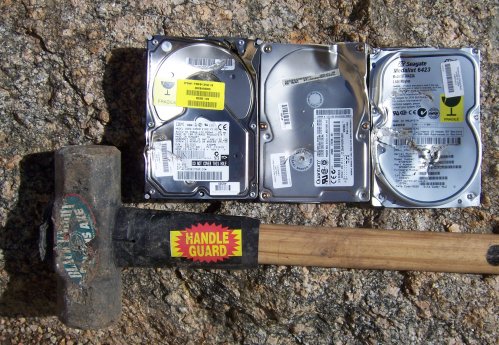
Stuff piles up. You know how it goes. Perhaps the worst of it is down in my workshop, where I’ve done nothing ambitious in almost a year. (My steampunk Geiger counter was the sole exception.) Predictably, when something comes to hand and no good place for it is found in a few seconds, it goes downstairs and ends up on my workshop floor. I still have some work to do down there to make the place habitable again, which brings me to the question of degunking hard drives.
What I’m referring to here is the pile of old hard drives on my workshop shelves. They’ve been there a long time, and they’re taking up space. I took a look at them earlier today. One of them is an 80GB drive of 2003 vintage that I took out of my old Dell Dimension before scrapping it last year, and that’s worth keeping. Most of the rest of them date back to 1998 or before. Many are not even mine. People I barely know have given me mid-90s vintage PCs, from which I generally pull the drive and SIMMs, and then take to the local computer recycler. What I haven’t done in some time is look at the capacities of the drives. That was an eye-opener: Two were 1.2 GB; another 3.5 GB, two more were 4 GB, another 6 GB. The biggest was an 18.3 GB Seagate Barracude, which may sound useful except that it uses the “wide” SCSI interface common in high-performance desktops in the late 1990s, now present on no machine in my collection.
They have to go. I used to dismantle old hard drives to pull the magnets out of them, but I already have a bin full of hard-drive magnets. I suppose I could connect each of them in turn to one of my machines, run Eraser on them a time or two, and then give them to the recycler. (After all, some of the data on those drives isn’t mine, and I no longer remember which drives are which.) Or…
…I could use One-Clunk Degunking: You place the drive in question on the driveway, and give it one good hard clunk with a five-pound sledgehammer. (I have granite boulders in abundance, which spares my concrete in case I miss.) That should do it, but as the incremental cost of clunks is small, two or three more for good measure won’t hurt. (Won’t hurt me, at least.)
I remember when hard drives (and the computers they were in) cost a great deal of money, and it’s tough not to look as those drives and think that whacking them is a terrible waste, but no other uses come to mind, and my shelves are pretty full. So out I went a few minutes ago, laid six drives on a flattish boulder, and gave each one a good hard clunk with the sledge. I was a little disappointed that they didn’t look more destroyed than they did, but trust me: No one will be reading those drives again. At this point (with plenty of shoveling still to do down there) I’m good with that.
25 Books That Changed Me Forever
Michael Covington’s recent entry on the books that made him what he is intrigued me, and I spent an hour or so today gathering a similar list. I’m not sure that the 25 books listed below made me what I am, but each one of them changed me somehow, and sent me off in a direction that was slightly (and sometimes greatly) different from the path I had been on before. I’ve listed them chronologically in the order that I first read them, and the number in parentheses is my age at that time.
Note well that these are not all fabulous books, nor are all of the many fabulous books that I’ve read in my life listed here. These are the books that changed me in some identifiable way. It’s an interesting exercise, and I powerfully recommend it.
- Space Cat by Ruthven Todd (6). I don’t recall all of the books that my parents read to me, nor the first few I struggled through on my own, but it was the Space Cat series that made me an insatiable reader. Not all of what I read after that was SF, but it was SF that made me absolutely desperate to read.
- The Golden Book of Astronomy by Rose Wyler, Gerald Ames, and John Polgreen (6). My grandmother and Aunt Kathleen bought this for me for my sixth birthday. It’s a big book, filled with beautiful watercolors of stars, planets, telescopes and spacecraft, framed with text I could read myself. Once I finished it (and I read it countless times) I never looked at the night sky the same way ever again.
- Tom Swift and His Electronic Retroscope by Victor Appleton II (8). Tom Swift, Jr was my first exposure to YA SF, and this was the first Tom Swift book that I ever had. (It was no better and no worse than most of the others.) Although I had read YA SF and fantasy books earlier, Tom Swift touched a nerve and made technological SF an obsession.
- The American Heritage History of Flight by Arthur Gordon (10). This was the first history book of any kind that just took me by the throat and held on. I learned much about invention, and the debt that all inventors owe to those who came before them. I learned that failure is no disgrace, if the effort was diligent. This book helped me dream vividly, and Samuel Pierpont Langley became one of my earliest identifiable heroes.
- Using Electronics by Harry Zarchy (11). I’d read a couple of Alfred Morgan’s electronics books for preteens before, but Zarchy was a better engineer, and the circuits he described in his books just worked with less aggravation, when all you had were greasy second-hand parts tacked together with Fahnestock clips on a piece of scrap lumber. The book gave me the confidence to continue my study of electronics, which continues down to this day.
- Retief’s War by Keith Laumer (13). Although I’d read Laumer’s wry The Great Time Machine Hoax a few months before, it took Retief to drive home the conviction that SF could be funny. Humor is pervasive. There are humorous moments in most of my SF, even in serious stories like The Cunning Blood.
- Types of Literature ed. Edward J. Gordon (14). My high school was superb, and chose its textbooks well. This book, in its tank-rugged plain black binding, broadened my enjoyment of reading beyond SF and science to poetry, drama, essay, and “mainstream” fiction. I don’t know where else I would have encountered Southey’s “The Cataract of Lodore” or John Galsworthy’s “The Pack”.
- Spectrum 5, ed. Kingsley Amis (14). This was the book that (finally) nudged me beyond YA SF and Laumer’s simple and often silly adventures to genuine adult SF. I was stunned by the impact that Miller’s “Crucifixus Etiam” had on me, and when I wrote my first SF short story later that same year, it was the stories in Amis’s Spectrum series that I was imitating.
- The Lord of the Rings (14). As a young teen I was no fan of magicians and elves and suchlike, and if it had not been for the insistence of the first girl I ever cared deeply for I would never have touched it. Instead, I stood poleaxed before an entirely new creation, and I trace my love of SF world-building directly to Middle Earth.
- World of Ptavvs by Larry Niven (15). When Niven’s character Larry Greenburg sets Pluto on fire, I gasped, put the book down, and thought (about the book, not Pluto): I wanna do that! Laumer taught me how to write space adventures, but Niven taught me to think big.
- Of Time and Space and Other Things by Isaac Asimov (16). I always loved reading about science, but this was the first of many science books to impress me with the quality of the writing. Asimov’s written voice spoke to me as though he were right there across the kitchen table, talking to me as a friend would. When a few years later I first tried to write about technology, this was approach I would use.
- The Fourth Dimension Simply Explained by Henry P. Manning (16). For all the BS about the fourth dimension that I’d read in bad SF, this was the first book that allowed me to take higher dimensions seriously. The following year, my science fair project on four-dimensional geometry took me to the city competition and earned me a silver medal. It also shook loose (finally) the close connection between math and numbers and allowed me to look at difficult concepts from a height, conceptually. (The numbers fell into place later on. Sometimes.)
- Clarion, edited by Robin Scott Wilson (20). This is not an especially good book. In fact, when I read it I was appalled that some of the stories had even been published, and it all seemed to be due to this writers’ workshop that they had attended. So, having noticed from the introduction that the editor was local to me in suburban Chicago, I looked him up in the phone book and called him, and asked him how I could get into that workshop too. He told me. I applied. I was accepted. Six weeks after I got home, I sold my first story.
- TTL Cookbook by Don Lancaster (23). This was the book that first got me tinkering with digital logic. More than that, it went beyond Asimov toward my lifelong ideal of writing about technology as though I were talking across the table to a friend. This became my trademark, and ultimately sold a third of a million technical books with my name on them, plus four years of columns in Dr. Dobb’s Journal.
- Pascal Primer by David Fox and Mitchell Waite (30). I learned FORTRAN, FORTH, APL, COBOL, and BASIC before I ever encountered Pascal (and you wonder why I write my reserved words in uppercase!) but it wasn’t until I saw Pascal that I could say that I really loved programming. This odd looseleaf book with its offbeat cartoon illustrations proved to me that writing about programming could be enhanced by humor and good diagrams. I could not have begun Complete Turbo Pascal without reading this one first.
- Conjuror’s Journal by Frances L. Shine (35). Purchased for a dollar in the closeout bin somewhere, this understated novel of a mulatto parlor magician who wanders around Colonial America was the first book I can truly recall moving me to tears, and the one to which I trace my love of rural American settings and country people.
- The Lessons of History by Will and Ariel Durant (42). You can read this in an evening, and if you do, you will know why reading history is important. I got it in a stack at a Scottsdale garage sale, and have read at least a hundred histories since then, few of which I would have otherwise attempted.
- Good Goats by Dennis Linn, Sheila Linn, and Matthew Linn (43). The absurd cruelty of the idea of Hell (which eventually destroyed my mother) set me against religion for many years. This little book, more than any other, allowed me to start the long trip back.
- World Building by Stephen L. Gillett (45). The math behind astrophysics turned out not to be as scary as I had feared. And so I began creating not just imaginal worlds, but imaginal worlds that worked. 18 months later, I finished my first adult novel, The Cunning Blood.
- Julian of Norwich by Grace Jantzen (47). Wow! So my lifelong nutso optimism was not insane after all, and suddenly I had a patron saint. “All will be well, and all will be well, and all manner of thing will be well.” You go, girl!
- The Inescapable Love of God by Thomas Talbot (49). This book finally made it clear to me that I could be a universalist or else an atheist. There were no other choices. A God who doesn’t want to save all his creatures is not all-good; a God who can’t bring it about (without compromising our freedom) is not all-powerful, and God must be both in order to be God at all.
- Opening Up by James W. Pennebaker (51). To combat the deepening depression that began consuming me after my publishing company imploded in 2002, I undertook a program of “writing therapy” as outlined by Pennebaker. Maybe it didn’t save my life. It certainly saved my optimism, and got me back on the path after a nasty year of confronting the Noonday Devil.
- The Criminal History of Mankind by Colin Wilson (55). Right Men are the cause of most of the misery that humanity seemingly cannot avoid. I would never think about authority figures the same way after reading this. Trust no one who has power over you. No one.
- On Being Certain by Robert A. Burton, MD (56). This book put words to a suspicion I had had for some time: Certainty makes you a slave to that about which you are certain. A tribe, an ideology, anything. To be free you have to accept that all human minds (especially your own) have limitations, and that nothing–nothing!–can be known with certainty.
- Good Calories, Bad Calories by Gary Taubes (56). I’d been losing weight and getting healthier for ten years before I read this book, mostly by avoiding sugar. Now, finally, I understood why. I also now understand how Right Men like Ancel Keys can take almost any scientific field and turn it to crap. Good science requires that we be skeptical of all science, particularly science that obtains the endorsement of government, which (like pitch) defiles everything it touches.
I’m now 58, and it’s been a couple of years since any single book has changed the direction of my thought and my life. I’m about due for another. I’m watching for it.
The Terror of Customer Expectations
As I’ve said any number of times, I loathe DRM and have since I first understood what it was. My reasons are these:
- It makes content delivery systems fragile. DRM adds complexity to a system, and by its nature is constantly looking for a reason to cut people off. Jerry Pournelle made this point at least 30 years ago, when DRM was “copy protection” and floppies ruled the world.
- DRM inconveniences paying users and does very little (if anything) to stop piracy. Because…
- A DRM system only needs to be broken once. A single very bright individual (or a small cadre of them) figures out the crack, then wraps it up in a script or a simple utility that any fool can use. Bruce Schneier made this point at least twenty years ago.
- DRM often ties content to one single company, generally through some kind of Internet permissions system. If that company goes under, DRMed content can become unavailable.
- Related to the above: DRM often (admittedly, not always) ties content to a single device or family of devices. Users who want to move to a different content rendering system can lose everything they’ve paid for.
- Very Large Companies Run By Comittees Of Clueless Egotists (VLCRBCOCEs) forget that the ultimate goal is to curry favor with customers so as to sell them stuff, and allow the pursuit of DRM to make them do really stupid things. Google “sony rootkit” to see how that works. Oh, and Amazon’s private dustup with the 1984 rightholders that led them to “repossess” books right off customer Kindles.
- Consequences of much or all of the above: DRM turns paying customers into pirates. Piss off honest customers a few times, and they’ll start looking on the pirate sites before heading over to your online bookstore.
In short, DRM creates an adversarial relationship between content providers and content purchasers that benefits neither side. As a publisher, I have promised never to force it on my readers.
Which brings us to today’s issue: What happens when online stores force DRM on me? Jim Strickland and I are preparing ebook editions of all our SF, and as time allows I’m going to do the same for my Carl & Jerry books, and even the Old Catholic Studies Series. It’s not news, and certainly not news to me, but we’ve had to confront the fact that Apple forces DRM on book publishers who want access to its store. Jim and I will probably go along, and think of a clever way to get unencumbered epubs to paying iBooks customers.
I don’t know what that clever way will be yet, but you’ll hear more about it as we figure it out. In the meantime, it’s a headscratcher: Why the hell would Apple do this? I’ve been sniffing around and there’s no clear answer. Some think it’s because Apple owns the DRM technology (FairPlay) and it’s in their interest to sell books with FairPlay gunked to them. I doubt that it’s true (it’s like paying yourself for something you already own) and given that you can download bookstore apps from other vendors to iOS, encumbered ebooks are at a competitive disadvantage, right there on Apple’s home turf. (Amazon allows unencumbered ebooks on Kindle.)
If I had to guess, it would be this: One or more VLCRBCOCEs in the print publishing industry, as part of their deals with Apple, demanded that everybody selling on iBooks must be required to use DRM–or no deal. What’s really at stake are customer expectations. Big Print is in a panic over ebook pricing to begin with, as we learned a year or so ago when Amazon and Macmillan jumped down one another’s throats. Macmillan didn’t want Amazon to “train” customers to think that ebooks should cost $9.99. (I was on Macmillan’s side that time, though for a different reason: If they jack their ebook prices up to the sky, I can undercut them much more easily. Amazon, please let publishers control their own pricing–especially huge, clueless, suicidal publishers.) In this case, Big Print doesn’t want customers to think of unencumbered ebooks as normal and expected, and DRM-encumbered ebooks as undesirable anomalies.
That particular war has already been lost, pretty much. Conventional wisdom among the tech savvy is that DRM is bad, and few of the indies use it. Nontechnical ebook buyers will figure it out when they decide to move to another reader system and can’t take their purchases with them. (The ebook business is so new that most people are still on their first reader and their first forty or fifty ebooks.) The day will come in the next few years when Big Print will be a lot less big, and competing against a lot more ebook publishers who have long understood that DRM does no one any good.
And price expectations, egad. $9.99 is so 2010. Many independent publishers now think that $3.99 or even $2.99 is the new normal. Furthermore, Amazon is now worried about yet another price point–99c!–at which their own ebook business model becomes unsustainable. Ebook pricing is still a huge imponderable, and I don’t (yet) have much useful to say about it. I hope to have some real data for you by this time next year.
Do I have proof that Apple was railroaded by Big Print into requiring DRM from all comers? No. But it makes sense to me: Apple didn’t have the negotiating leverage that Amazon or B&N had. If they get bigger, things may change. And if they don’t get bigger, it may be because everybody else, and especially the indies, is eating their lunch. Either way, for weal or woe, Big Print is in trouble, and therein lie many more entries that I hope to write in the near future.
Odd Lots
- From the Words-I-Didn’t-Know-Until-Yesterday Department: mobula, a genus of fish in the general category of ray or skate. They can weigh as much as a ton, and get as high as two meters out of the water when they breach. (Thanks to Pete Albrecht for pointing it out.)
- From the same department: bodge, a UK-ism for a clumsy or ineffective repair. I’m guessing it’s a portmanteau of “botched kludge.” (In the US, see There I Fixed It.)
- And for the deep history of the silly, probably racist, and still-undefined phrase “bunga bunga” you can’t do better than the Beeb. (Another one from Pete.)
- Almost everyone else has aggregated this, but it’s important: A brilliant chart showing relative radiation risks, from (not all that remarkably) xkcd. Everything is radioactive, from bananas to the family dog to…you.
- I got a smile out of seeing that the latest ABEBooks email newsletter featured (mostly) Victorian-era etiquette guides, and it arrived during Anomaly Con. Do we even know what “etiquette” means anymore? It sure looks like they did.
- Heat capacitors for your coffee! I put too much cream in mine for these to be useful, but for a novel application of real physics Joulies are hard to beat.
- For a couple of days now, any attempt to access modernmechanix.com has hung waiting for yui.yahooapis.com. This used to happen, and then it stopped happening, and then it started happening again, and then it stopped (and not just on that site) and nothing has changed here on my part in the meantime. It hangs in all browsers I have installed here. Do I have to call the programmers morons to get their attention? Do I have to call their software dogshit? YUI doesn’t work. It doesn’t. Stop using it.
- Don Lancaster has just put his two-volume Apple Assembly Cookbook (1984) up on his site as free ebooks. (PDF format.) I guess I should remind the young’uns that these are books focusing on the 6502 assembly language that was used on the Apple II/IIe machines in the 1970s and 80s. Don has been significant in my life for a number of reasons (I learned IC technology from his books back in the mid-70s) but most of all because I learned how to do technical writing by studying his technique. He’s one of the best tech writers ever. Period.
- You could probably have figgered what this was even before I told you: a steampunk wrist radio.
- And at the other end of the spectrum (as it were) we have a very nice DIY tutorial on building a standalone Wi-Fi radio. My first thought was to put it into the cabinet of an old “All-American Five” tube radio, but somebody beat me to it.
- Even more radio: I bought a nice Standard Communications SR-C146 on eBay, for $30 inluding shipping. The unit is dusty but works fine, and looks like it had not been used much. I have a couple of repeater pair crystals for it (though I haven’t tested them yet) but what I really need is a pair for the National Simplex Frequency of 146.52 MHz. Trying to figure out who might still make/sell crystals for the unit.
